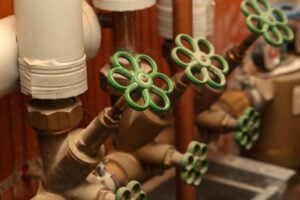Tractor Autopilot – AI and The Farming Industry

Artificial intelligence doesn’t much come into the picture when you consider farming. Yet as Hackaday mentions, the field has already managed to produce an autonomous driving tractor although full autonomy is some way off yet. As far as technological advancements go, this is on the scale of the tractor being introduced, allowing one farmer to do the work of four. You don’t even need to keep a tractor-trailer accident attorney on retainer since it’s unlikely it’ll crash into anything. However, after the autonomous tractor, AI has been added to steering systems to bring about autopilot in these massive harvesting machines. It turns out autopilot might be the future of farming and not autonomous tractors.
Why Not Autonomous Driving Tractors?
The challenges that tractors may have to face as autonomous vehicles may be less than those that on-road cars have to face. With so much money tied up in the farming industry, the push is always to see how much more efficient new technology advances can make it. As impressive as having an autonomous driving tractor might be, it still has a significant development hurdle to overcome.
Current levels of AI deep-learning models are all based around supervised learning. In this methodology, the system is fed new data, and then a researcher helps it interpret that data to learn. Unsupervised learning is the next step in the process where AI can utilize data without having a human present to support it, but this is years off being commercially ready. With farmers wanting autonomous tractors that perform like level-5 autonomous vehicles, it may be some time before they’ll find a product that fits their expectations. However, there’s still hope for AI-powered driving solutions.
Focusing on Productivity, not Autonomy
With the need for efficiency pressing in on the industry, waiting years for autonomous driving to perfect its methodologies may leave the agricultural sector lacking. Instead, framers should focus on solutions that they can practically implement today. It was from this thinking that the idea of the farming autopilot was born. The autopilot system incorporates three subsystems. The first deals with its “vision,” the second with its coding that humans can access to prioritize tasks. The third is a feedback control system that translates the vehicle’s actions into physical movements. The system learns how to deal with new environmental and physical conditions and adapts to these new criteria. While it still requires a human to aid it in learning, it’s far more advanced than a non-autopilot tractor-trailer. While it’s not yet autonomous, it’s an impressive bit of AI engineering.
AI in Farming
AI is likely to lead to much more efficient farming practices, but since efficiency is the key and not autonomy, farming can be happy with piecemeal advances. Autopilot isn’t autonomous driving, but it offers a beneficial method of directing a vehicle that learns from its mistakes and the environmental conditions around it. Farming is a complex task that will require a lot of effort to automate completely. In the meantime, small advances will help keep farming’s productivity up while waiting for the next significant advancement in AI.




